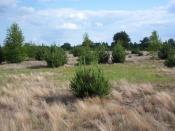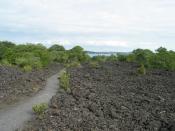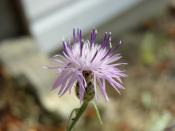Succession is a long-term change in the composition of communities. Unlike the action of seasons and natural disasters, succession is brought about by the activities of living organisms themselves who inhabit the environment. Over a period of time the environment is modified by these organisms so it becomes suitable for colonisation by another species and less suitable for those already there. These original species cannot compete with the new species better equipped to exploit the improved conditions so these organisms are 'out competed' and disappear.
Primary succession begins on a bare surface such as a rock face, a volcanic island or land freshly exposed after a glacier, all are surfaces completely devoid of life. The only type of life that can inhabit these areas are hardy pioneer species such as lichens or algae which are autotrophic and provide a base for food chains and food webs. These plants are resilient to the harsh conditions on this barren area; lack of shelter from the wind, temperature fluctuations - hot at night and cold at night and lack of water.
Small insects live among these lichens in cracks in the rock such as ant, spring-tails and mites. These are either carnivorous or scavengers and feed on what they can catch or dead organisms.
Over time the lichens and algae aid the build up of soil by the gradual biological weathering of the parent rock and accumulation of wind blown particles trapped by the lichens an algae. Spiders thrive in this environment catching ants and mites in webs for food. Humus is added to the accumulating soil by the decomposition of parts of these pioneer species and eventually enough soil has built up to support vascular plants such as ferns and small flowering plants. These new species of plants are better adapted to...


